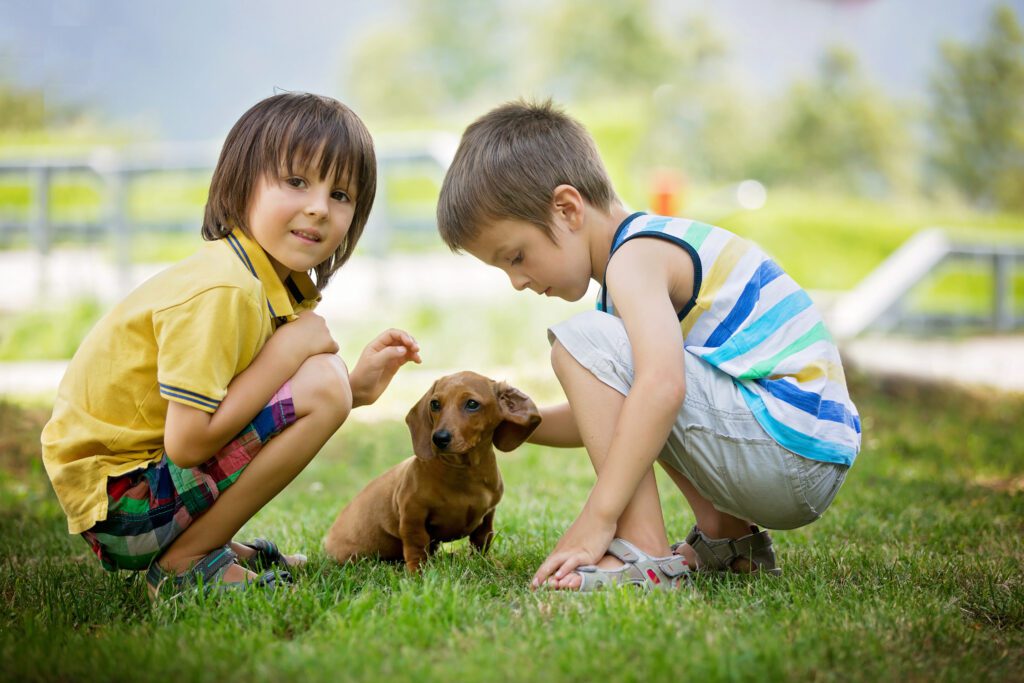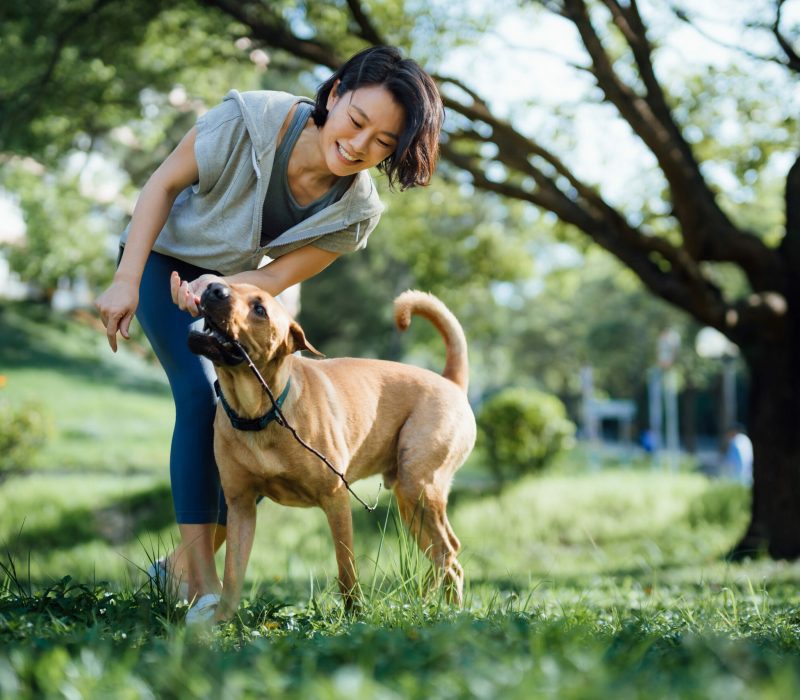mission &
philosophy
our mission
modern times, modern methods
Our mission at the Academy is to raise the standard of dog training worldwide. We are working in an unregulated field where, in most jurisdictions, anyone can claim to be a dog trainer and do anything to dogs in the name of training.
We believe ethical aspiring trainers require a thorough grounding in the principals of operant and classical conditioning and have the practical and technical skills to execute both protocols correctly, without the use of force, pain or intimidation.


Philosophy
increase understanding
Our philosophy is that dogs have the right to be trained without aversive stimuli, to feel safe, have rich lives and to engage in normal dog behavior.
The families of dogs have the right to competent, professional, and fully trained practitioners and to be made aware of the potential effects of any training or behavior modification approach so that they can give informed consent.
We teach dogs and coach their families kindly and efficiently, and we act as the translators between the two cultures: dog and human.
Our goal for dogs
HOMED FOREVER
NOT ABANDONNED
REMAIN HOMED
not given up on
Are integrated
Are Integrated
Are Socialized & safe
Socialized & Safe
are understood
are understood
Trained skillfully
Train Trainers
Empowered Owners
Empowered Owners
In sum, we want families to have the richest possible relationship with their dog, understand their dogs' needs, and are empowered to access reinforcers (e.g. attention, play, food, toys, smells etc.) in ways that are acceptable in a human environment.

Position
statement
Dog training is an unregulated profession and it is still legal in some jurisdictions to use outdated methods that rely on the use of pain, fear and intimidation. As the minds behind the nation’s best dog trainer education, here is a breakdown of the Academy’s position on training methods.
The Academy recognizes that, in most jurisdictions, dog training is unregulated. Practitioners range from those with formal education and credentials to those who are entirely self-proclaimed, taking money for hire without any formal training and using virtually any method. The Academy relies on the use of positive reinforcement and rewards withdrawal.
Aversive stimuli include electric shock, collars that strangle, "prong" collars that dig pins into dogs’ necks, striking dogs and a wide range of interventions designed to frighten, startle and intimidate dogs. These methods are entirely unnecessary to competent trainers.
It is The Academy’s position that consumers be extremely wary in this landscape and hire only trainers with formal training and who do not employ aversive stimuli of any kind in their training and behavior modification. Credentials to look for include CTC, PCBC-A, KPA-CTP, PMCT, CDBC, Dip. ABST, CPDT and university degrees in relevant subjects.
The Academy applauds professional organizations that require credentialing, however disagrees with the philosophy some organizations support, framed as Least Invasive Minimally Aversive (LIMA) hierarchies of technique selection.
Such hierarchies allow for the use of aversive stimuli (negative reinforcement and positive punishment) if other means have been exhausted. The Academy does not support LIMA or similar hierarchies because it has become clear in both the literature and clinical settings that aversive stimuli are never necessary, are inhumane, and very often side effect-laden.
It is our position that the onus is on proponents of LIMA-type philosophies to account for the many thousands of practitioners who achieve good outcomes on the full variety of case types, and have done so over many decades, without any use of aversive stimuli. Research into training methods consistently finds reward-based training to be not only less stressful for dogs, but equally or more effective than negative reinforcement- and positive punishment-based methods, including in contexts traditionally believed to require the use of aversive techniques.
In contrast to aversive stimuli, there is no research suggesting that reward removal (negative punishment, e.g. closing hand in a “leave-it” exercise, turning one’s back or briefly exiting when a dog jumps up to greet, leaving the room when a puppy bites too hard) is detrimental, ineffective or carries negative side effects.
Furthermore, researchers consistently refer to the use of reward removal (negative punishment/P-) as subsumed under “reward-based training,” as it is inevitable insofar as that, from the perspective of the learner, responses that do not make criteria and go unrewarded will decrease in frequency. The American College of Veterinary Behavior explicitly supports the use of reward removal. On the human side, the American College of Child and Adolescent Psychiatry, American College of Pediatrics and American Psychological Association all support the use of time out from positive reinforcement.
Furthermore, in dogs, in contrast to differential reinforcement, reward removal has a narrower target, i.e. by reducing or eliminating one undesired behavior, the dog may continue to behave at liberty rather than being taught a particular behavior, which must then be chosen by and reinforced by the trainer or owner in order prevent the problem.
It is therefore the position of The Academy that reward-removal (negative punishment/P-) is a safe, humane and effective technique.
References
Arhant, C., Bubna-Littitz, H., Bartels, A., Futschik, A., & Troxler, J. (2010). Behaviour of smaller and larger dogs: Effects of training methods, inconsistency of owner behaviour and level of engagement in activities with the dog Applied Animal Behaviour Science, 123 (3-4), 131-142 DOI: 10.1016/j.applanim.2010.01.003
Blackwell, E. J., Bolster, C., Richards, G., Loftus, B. A., & Casey, R. A. (2012). The use of electronic collars for training domestic dogs: estimated prevalence, reasons and risk factors for use, and owner perceived success as compared to other training methods. BMC Veterinary Research, 8(1), 93. https://doi.org/10.1186/1746-6148-8-93
Casey, R., Loftus, B., Bolster, C., Richards, G., & Blackwell, E. (2014). Human directed aggression in domestic dogs (Canis familiaris): Occurrence in different contexts and risk factors Applied Animal Behaviour Science, 152, 52-63 DOI: 10.1016/j.applanim.2013.12.003
China, L., Mills, D.S. & Cooper, J.J. (2020) Efficacy of dog training with and without remote electronic collars vs. a focus on positive reinforcement. Frontiers in Veterinary Science, https://doi.org/10.3389/fvets.2020.00508.
Cooper, J. J., Cracknell, N., Hardiman, J., Wright, H., & Mills, D. (2014). The welfare consequences and efficacy of training pet dogs with remote electronic training collars in comparison to reward based training. PloS one, 9(9), e102722.
Dadds, M. R., & Tully, L. A. (2019). What is it to discipline a child: What should it be? A reanalysis of time-out from the perspective of child mental health, attachment, and trauma. American Psychologist, 74(7), 794–808. https://doi.org/10.1037/amp0000449
De Castro, Ana Catarina, Fuchs, Danielle, Morello, Gabriala Munhoz, Pastur, Stefania, de Sousa, Liliana, Olsson, I. Anna S. (2020). Does training method matter? Evidence for the negative impact of aversive-based methods on companion dog welfare. PLOS ONE https://doi.org/10.1371/journal.pone.0225023
Deldalle, S., & Gaunet, F. (2014). Effects of 2 training methods on stress-related behaviors of the dog (Canis familiaris) and on the dog–owner relationship Journal of Veterinary Behavior: Clinical Applications and Research, 9 (2), 58-65 DOI: 10.1016/j.jveb.2013.11.004
Grainger, J., Wills, A., & Montrose, V. (2016). The behavioral effects of walking on a collar and harness in domestic dogs (Canis familiaris) Journal of Veterinary Behavior: Clinical Applications and Research, 14, 60-64 DOI: 10.1016/j.jveb.2016.06.002
Herron, M., Shofer, F., & Reisner, I. (2009). Survey of the use and outcome of confrontational and non-confrontational training methods in client-owned dogs showing undesired behaviors Applied Animal Behaviour Science, 117 (1-2), 47-54 DOI: 10.1016/j.applanim.2008.12.011
Hiby, E. F., Rooney, N. J., & Bradshaw, J. W. S. (2004). Dog training methods: their use, effectiveness and interaction with behaviour and welfare. Animal Welfare-Potters Bar then Wheathamstead, 13(1), 63-70.
Knight, Rachel M. PhD*; Albright, Jeremy PhD†; Deling, Lindsay PhD‡; Dore-Stites, Dawn PhD*; Drayton, Amy K. PhD*. Longitudinal Relationship Between Time-Out and Child Emotional and Behavioral Functioning. Journal of Developmental & Behavioral Pediatrics 41(1):p 31-37, January 2020. | DOI: https://pubmed.ncbi.nlm.nih.gov/31513092/
Masson, S., de la Vega, S., Gazzano, A., Mariti, C., Pereira, G. D. G., Halsberghe, C., … & Schoening, B. (2018). Electronic training devices: discussion on the pros and cons of their use in dogs as a basis for the position statement of the European Society of Veterinary Clinical Ethology (ESVCE). Journal of Veterinary Behavior. https://doi.org/10.1016/j.jveb.2018.02.006
McGowan, R., Rehn, T., Norling, Y., & Keeling, L. (2013). Positive affect and learning: exploring the “Eureka Effect” in dogs Animal Cognition, 17 (3), 577-587 DOI: 10.1007/s10071-013-0688-x
Mellor, D. (2016). Moving beyond the “Five Freedoms” by Updating the “Five Provisions” and Introducing Aligned “Animal Welfare Aims” Animals, 6 (10) DOI: 10.3390/ani6100059
Rooney, N., & Bradshaw, J. (2002). An experimental study of the effects of play upon the dog–human relationship Applied Animal Behaviour Science, 75 (2), 161-176 DOI: 10.1016/S0168-1591(01)00192-7
Vieira de Castro, A. C., Barrett, J., de Sousa, L., & Olsson, I. A. S. (2019). Carrots versus sticks: The relationship between training methods and dog-owner attachment. Applied Animal Behaviour Science.
Vieira de Castro, A. C., Fuchs, D., Morello, G. M., Pastur, S., de Sousa, L., & Olsson, I. A. S. (2020). Does training method matter? Evidence for the negative impact of aversive-based methods on companion dog welfare. Plos One, 15(12), e0225023.
Ziv, G. (2017). The Effects of Using Aversive Training Methods in Dogs–A Review. Journal of Veterinary Behavior: Clinical Applications and Research. https://doi.org/10.1016/j.jveb.2017.02.004
join us!
You will find at the Academy a community of passionate and compassionate trainers who will be your peers and colleages as we fight to make harsh methods for training dogs a thing of the past.
